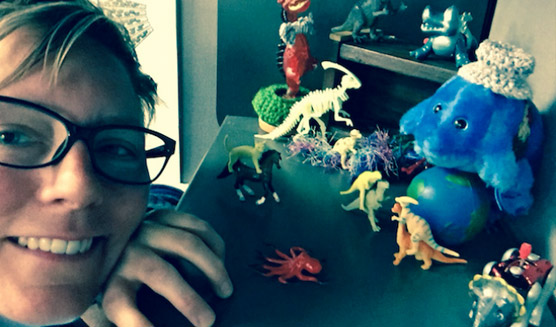This April marks the sixth anniversary of the tragic explosion of the Deepwater Horizon MC252 drilling platform in 2010, which released millions of barrels of oil into the Gulf of Mexico and resulted in devastating impacts to wildlife and coastal habitats. During my year as a 2015 Knauss Marine Policy Fellow, I assisted with restoration planning for the Natural Resource Damage Assessment (NRDA) process mandated under the Oil Pollution Act.
Under this law, impacted states and designated federal agencies are entrusted with the authority to evaluate losses and restore natural resources directly and indirectly affected by the spill. While images of oiled shorebirds and stranded sea turtles have long since been abandoned by nightly news programs, in the six years following the Deepwater Horizon explosion, the NRDA trustees have been working diligently to facilitate long-term restoration of the Gulf region.
As I reflect upon my time as a Knauss Fellow, I remember the anticipation of leaving behind the comforts of a funky, southern college town to embark on a year-long adventure in our nation’s bustling capital. My transition was ushered in with a combination of exhilaration and trepidation, as my primary concerns upon departing graduate school included the following: After spending several years trudging through the sweltering salt marshes of the Georgia coastline, could I confidently switch gears by trading in my muddy fieldwork apparel for a new wardrobe of fancy business attire? Would I assimilate into the fast-paced world of policy-making in this City of Magnificent Intentions? And most importantly, will my collection of tiny dinosaurs and dragons (and their cohort of cryptic creatures) be permitted to accompany me in a government cubicle?
Much to my relief, I was welcomed with open arms into my fellowship placement in the NOAA Restoration Center, nestled within the Office of Habitat Conservation in NOAA Fisheries. The first few weeks entailed swimming in a sea of unknown acronyms, coupled with crash courses in restoration-policy lingo and legalese. While learning the proverbial ropes, I embedded myself in a case that will ultimately be the largest environmental settlement in U.S. history.
During the fellowship, I assisted with the development of strategic priorities and project management plans for sea turtle recovery in the Gulf; provided scientific and technical support for coastal wetland restoration planning; and helped to ensure environmental compliance with federal regulations. I also attended official meetings during the comment periods that followed public release of draft restoration plans. Working with the planning teams and observing interactions between the government and stakeholders opened a window into the adaptive process of ecosystem-level restoration. Furthermore, participating in this role has engendered a unique opportunity for both personal and professional growth.
Shortly after the culmination of my fellowship, the Deepwater Horizon Programmatic Damage Assessment and Restoration Plan (PDARP) and Programmatic Environmental Impact Statement (PEIS) was finalized in February, 2016. This document, totaling nearly 1,500 pages in length, contains an extensive evaluation of spill-related injuries and outlines the comprehensive, integrated restoration needed to compensate the public for such impacts. Following recent court approval of the consent decree entered with BP, restoration will be implemented by the natural resource trustees throughout the Gulf over the next 15 years.
Future projects to be developed within the PDARP/PEIS framework will restore coastal and nearshore habitats, improve water quality, protect natural resources, and enhance recreational opportunities. My involvement in the restoration planning process for Deepwater Horizon was but a modest piece of an enormous, evolving puzzle; nonetheless, it proved to be a valuable, eye-opening experience.
And just in case you were still wondering: Yes, my creature companions were permitted to cohabitate in my cubicle for the fellowship year. The crew continues to supervise me in my current role as a Marine Habitat Resource Specialist, fulfilling grants management responsibilities in support of the NOAA Restoration Center.



